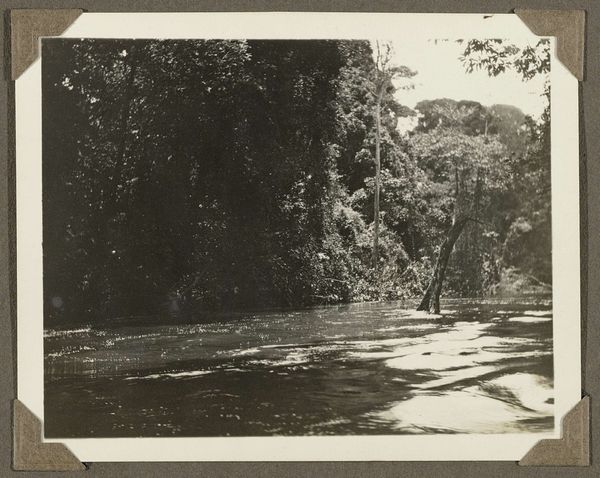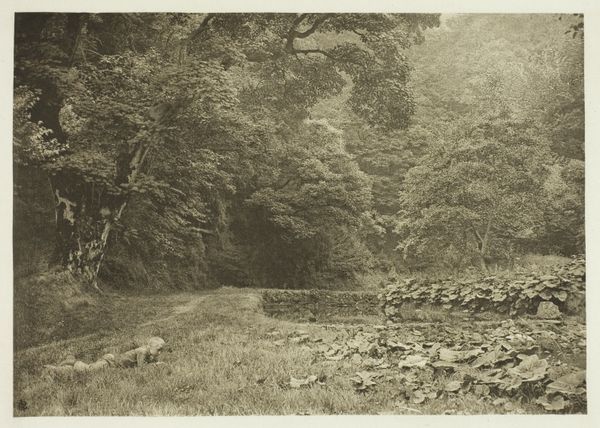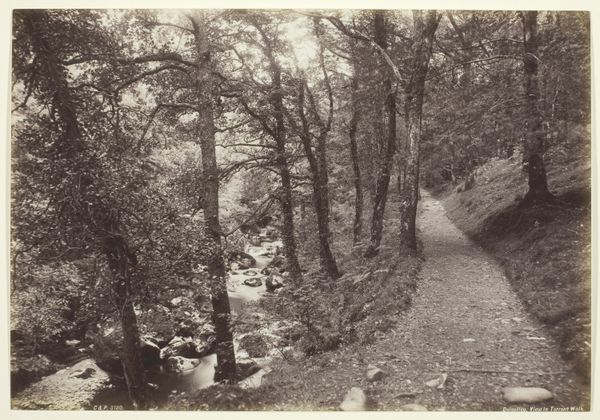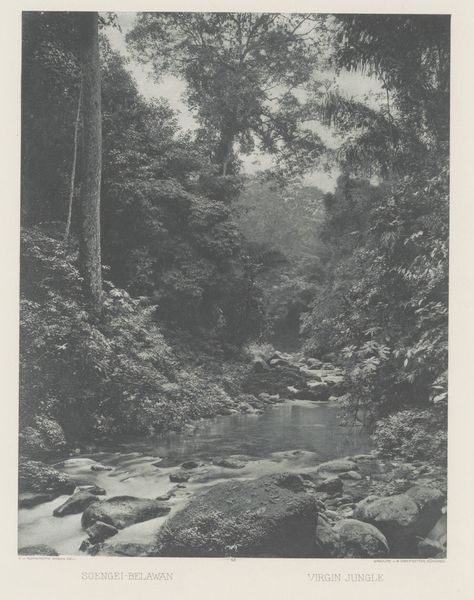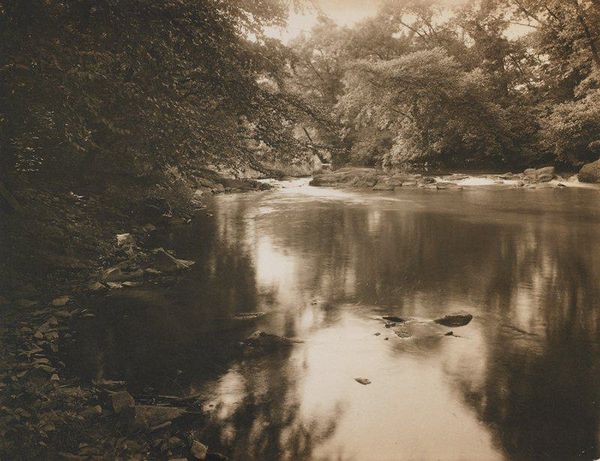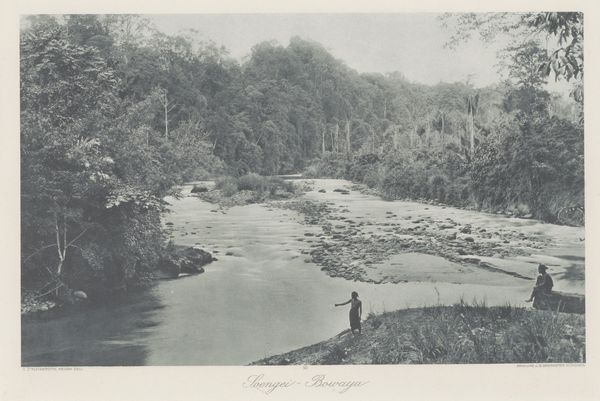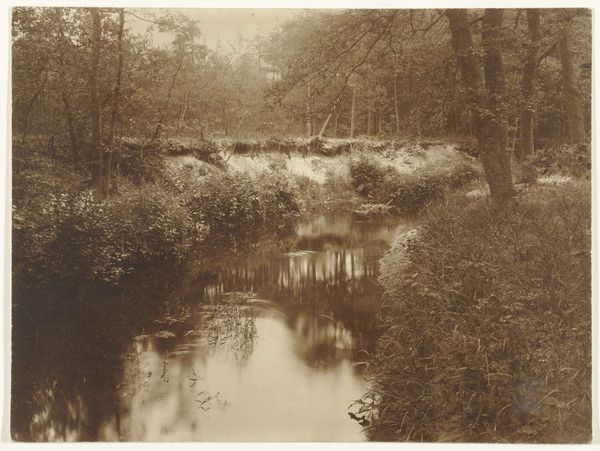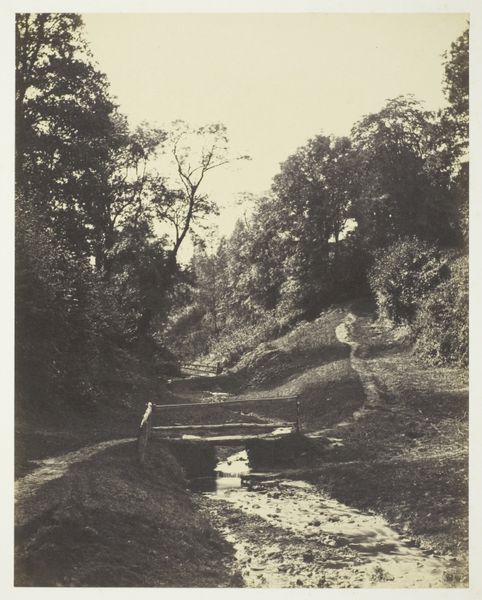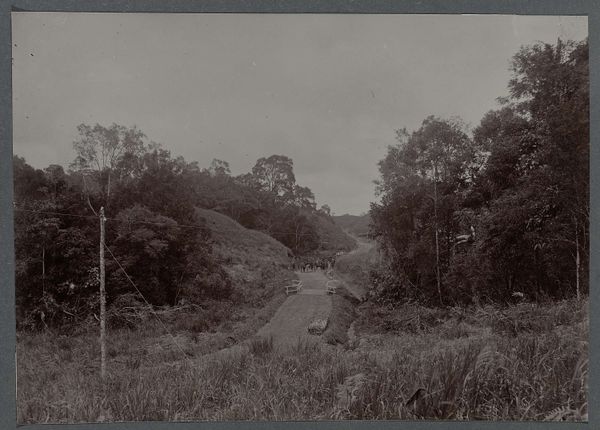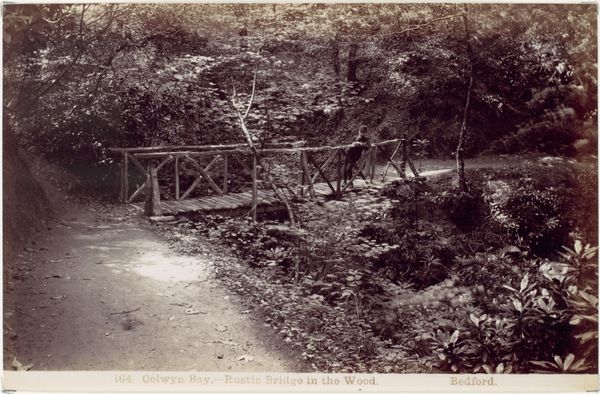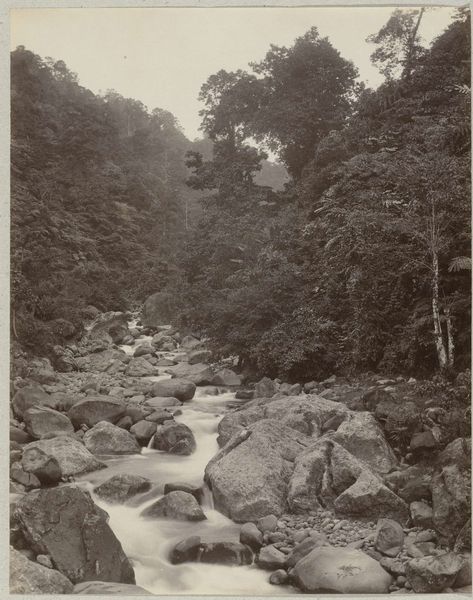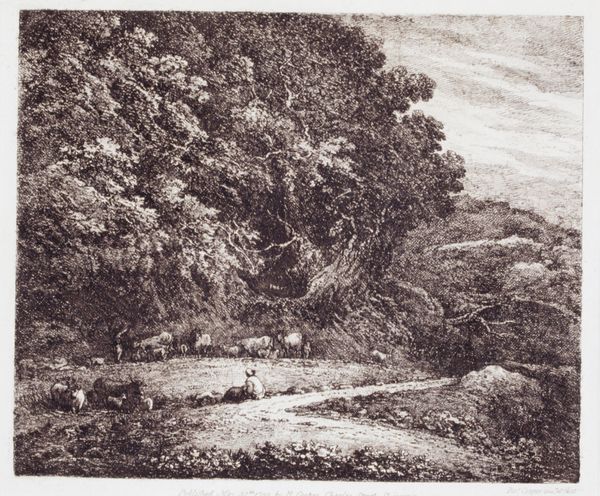
Dimensions: 16.1 × 21.2 cm (image/paper)
Copyright: Public Domain
Editor: Here we have Francis Bedford's "Ivy Bridge, View on the Prysor River," likely taken in the 1860s. The composition, with that large tree on the right, feels both intimate and a bit melancholic. What do you see in this piece beyond just a picturesque scene? Curator: Beyond the initial aesthetic appeal, I see a reflection of the broader societal values and anxieties of Victorian England. Think about the rise of industrialization, and urbanization; how did that affect our perception of nature? Editor: I imagine it became something people romanticized, something to escape to in their minds. Curator: Precisely. And photography like this played a crucial role. Bedford’s image, in its careful composition, attempts to capture the sublime essence of untouched nature, a refuge increasingly threatened. Consider also who had access to these images. Editor: The upper classes? As a luxury item? Curator: Exactly! Think about how access to these romanticized landscapes became a class marker, reinforcing social hierarchies even within the experience of nature. Isn’t it interesting that it seems untouched, even if that wasn't truly the case? Does that add something more to the discussion of power and representation? Editor: That totally changes my perception! I hadn't considered the social implications embedded in what seems like a simple landscape. Curator: Seeing art as entangled with social forces is essential. Even beauty has its politics. Editor: This has given me so much to consider! It's a whole new layer to understanding not just the art, but the society that created and consumed it.
Comments
No comments
Be the first to comment and join the conversation on the ultimate creative platform.
